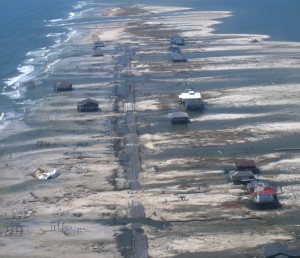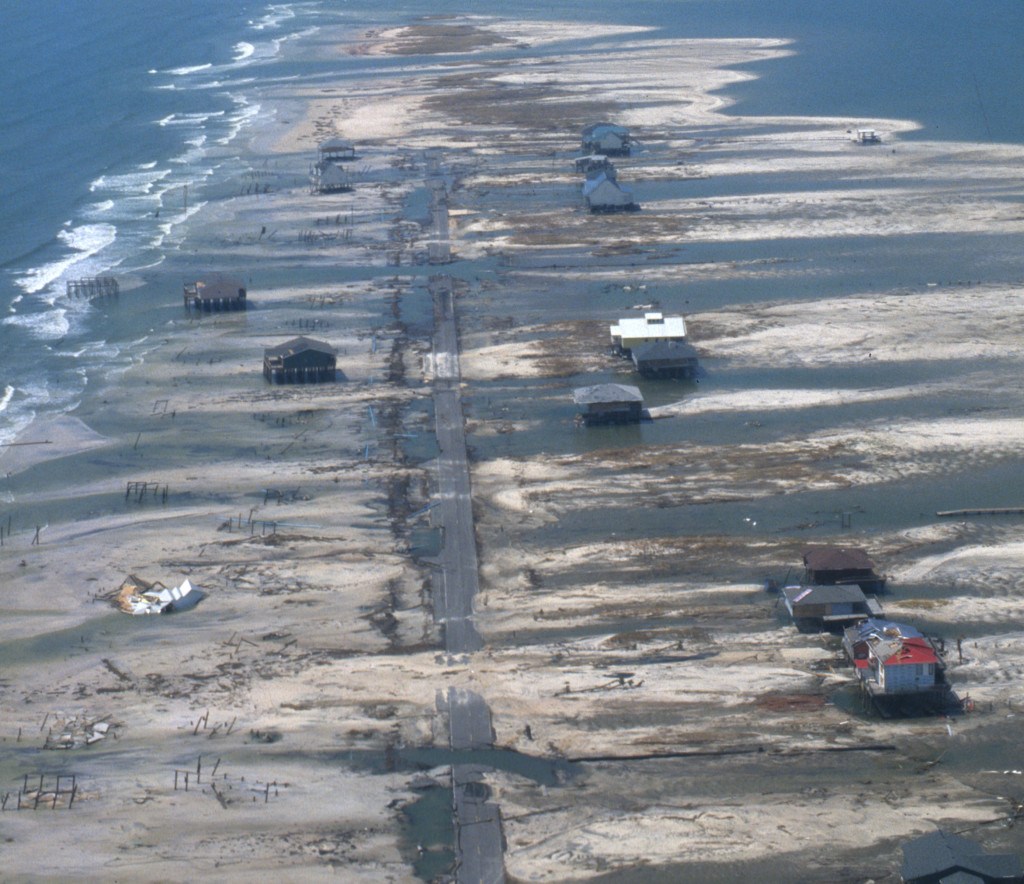Nature and a multimillion dollar rock pile built in the Gulf of Mexico after the BP oil spill have healed a large barrier island nine years after it was sliced in two by Hurricane Katrina.

Katrina swamped Alabama’s narrow Dauphin Island in 2005, creating a pass that grew from a few dozen feet to about 1.5 miles wide by the time the oil spill occurred in 2010. The cut left more than 7 miles of pristine beach inaccessible by foot on the island’s uninhabited western end.
But then BP’s Macondo well blew off the coast of Louisiana and spewed oil – and cash – into the Gulf region.
Using about $17 million from BP PLC, the state of Alabama hired contractors to build a line of huge rocks to seal the Dauphin Island cut in 2010 in hope of keeping oil away from the mainland.
Now, sand captured by those same rocks has created a new beach that ranges from a couple hundred yards wide to just a few feet wide. For the first time since August `05, beachgoers can walk the entire length of Dauphin Island, nearly 17 miles.
Mayor Jeff Collier said he began hearing reports from boaters and a local pilot within the last three months that the “Katrina Cut” was finally filled in. The fact that there hasn’t been a big storm in the Gulf since the oil spill helped immensely.
“It’s been gradual. They put the rocks in and then the sand filled in over time,” he said.
The U.S. Army Corps of Engineers still hasn’t issued a permit for the rock pile to remain permanently, meaning the government could still require the demolition of the structure. And a beach expert said the next hurricane could cut the island in three places: The ends of the rock pile and another section where sand was moved to build huge berms that protected the island from BP oil.
“A strong Category 1 (hurricane) could do it, and a 2 or a 3 definitely will do it,” said Scott Douglass, a coastal engineering expert at the University of South Alabama in Mobile. Replacing the sand that was removed could help, he said, but it would cost millions.
But in the meantime, sand will continue to fill in around the rocks and grow the island, which is shaped like a giant tadpole with a bulbous eastern end and a narrow western end.
The rock project – which some derided as wasteful spending since it wasn’t completed until after the BP well was brought under control – turned out to be a benefit, Collier said.
Was this article valuable?
Here are more articles you may enjoy.


 Texas Among Several States Facing New Fire Risks: Weather Watch
Texas Among Several States Facing New Fire Risks: Weather Watch  Oregon Schools Sued for $9M After Young Girl Allegedly Raped
Oregon Schools Sued for $9M After Young Girl Allegedly Raped  Viewpoint: How Generative AI Enables a Brighter Claims Future in 2024 and Beyond
Viewpoint: How Generative AI Enables a Brighter Claims Future in 2024 and Beyond  Vintage Ferrari Owners’ Favorite Mechanic Charged With Theft, Fraud
Vintage Ferrari Owners’ Favorite Mechanic Charged With Theft, Fraud 